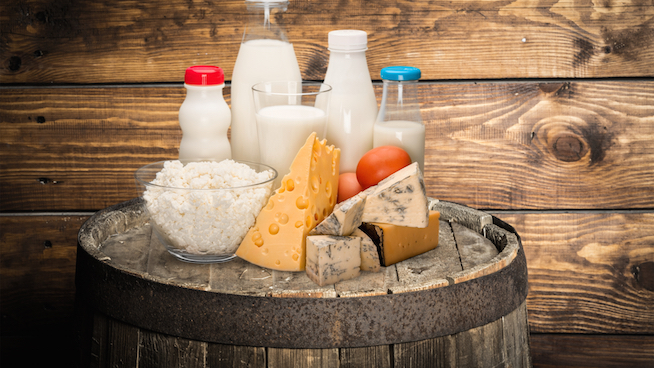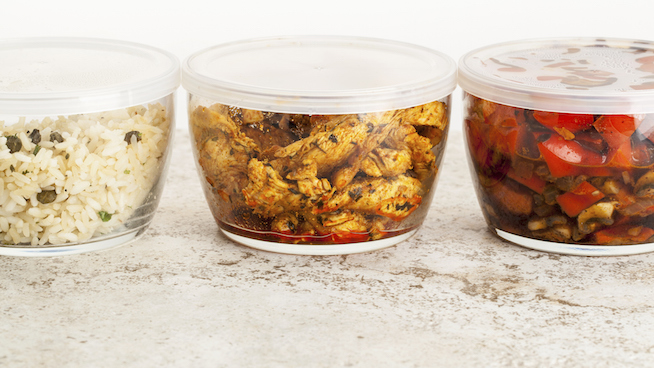Gary Roberts' Diet for Elite Hockey Players
Gone are the days of pigging out all summer, then showing up at training camp and playing your way back into shape. Today’s elite hockey players must commit to honing their craft 365 days of the year. If they don’t, more than likely they’ll be out of a job.
What’s an aspect of that commitment that doesn’t have to do with on- or off-ice training? Their diets. Top hockey players now watch what they eat year-round, so they can achieve their goals during the season. (Read about healthy hockey pre-game meals.)
Gary Roberts is a perfect example of the effect nutrition can have on a hockey player’s career. Forced to retire from the NHL at age 30 with chronic neck issues, Roberts resurrected his career and played for 11 more years thanks to his newfound commitment to a radical diet and exercise plan. Now he’s passing on his knowledge to the next generation at the Gary Roberts High Performance Centre in Toronto.
According to an interview in the Globe and Mail, Roberts’ plan calls for a variety of mostly organic food sources, including lean meats, low-glycemic carbs, fruits and veggies. Inevitably, the diet gets a little looser during the season, considering that daily practices and games put players in a big calorie deficit, which is nearly impossible to wipe out with clean food sources alone.
That said, in the summer, when on-ice sessions are greatly reduced, the diet is clean, aimed at promoting recovery and building muscle. Get your diet on track with a sampling of some of Roberts’ approved “clean foods.” (Training camp cooking class.)
Gary Roberts’ Hockey Diet Approved Clean Foods
Fats
- Full-fat yogurt
- Goat’s milk (3.5% MF)
- Organic cream cheese
- Brazil nuts
- Walnuts
- Almonds
- Coconut oil
- Extra-virgin olive oil
Protein
- Organic steak
- Natural sausage
- Organic chicken
- Wild-caught canned tuna
- Wild Pacific salmon
Low Glycemic Carbohydrates
- Quinoa
- Brown rice
- Brown-rice pasta
Vegetables
- Kale
- Sprouts (sunflower, pea, arugula)
- Avocado
- Chickpeas
- Mung beans
- Lentils
A variety of fresh fruits (notably berries) are also encouraged, but Roberts discourages eating processed, pre-packaged foods.
RECOMMENDED FOR YOU
MOST POPULAR
Gary Roberts' Diet for Elite Hockey Players
Gone are the days of pigging out all summer, then showing up at training camp and playing your way back into shape. Today’s elite hockey players must commit to honing their craft 365 days of the year. If they don’t, more than likely they’ll be out of a job.
What’s an aspect of that commitment that doesn’t have to do with on- or off-ice training? Their diets. Top hockey players now watch what they eat year-round, so they can achieve their goals during the season. (Read about healthy hockey pre-game meals.)
Gary Roberts is a perfect example of the effect nutrition can have on a hockey player’s career. Forced to retire from the NHL at age 30 with chronic neck issues, Roberts resurrected his career and played for 11 more years thanks to his newfound commitment to a radical diet and exercise plan. Now he’s passing on his knowledge to the next generation at the Gary Roberts High Performance Centre in Toronto.
According to an interview in the Globe and Mail, Roberts’ plan calls for a variety of mostly organic food sources, including lean meats, low-glycemic carbs, fruits and veggies. Inevitably, the diet gets a little looser during the season, considering that daily practices and games put players in a big calorie deficit, which is nearly impossible to wipe out with clean food sources alone.
That said, in the summer, when on-ice sessions are greatly reduced, the diet is clean, aimed at promoting recovery and building muscle. Get your diet on track with a sampling of some of Roberts’ approved “clean foods.” (Training camp cooking class.)
Gary Roberts’ Hockey Diet Approved Clean Foods
Fats
- Full-fat yogurt
- Goat’s milk (3.5% MF)
- Organic cream cheese
- Brazil nuts
- Walnuts
- Almonds
- Coconut oil
- Extra-virgin olive oil
Protein
- Organic steak
- Natural sausage
- Organic chicken
- Wild-caught canned tuna
- Wild Pacific salmon
Low Glycemic Carbohydrates
- Quinoa
- Brown rice
- Brown-rice pasta
Vegetables
- Kale
- Sprouts (sunflower, pea, arugula)
- Avocado
- Chickpeas
- Mung beans
- Lentils
A variety of fresh fruits (notably berries) are also encouraged, but Roberts discourages eating processed, pre-packaged foods.













